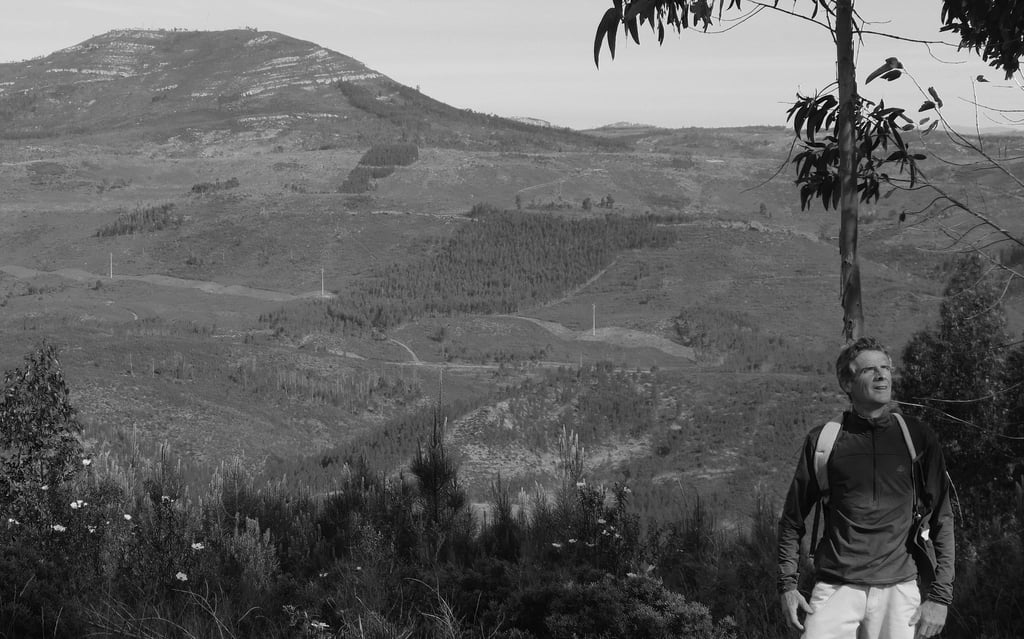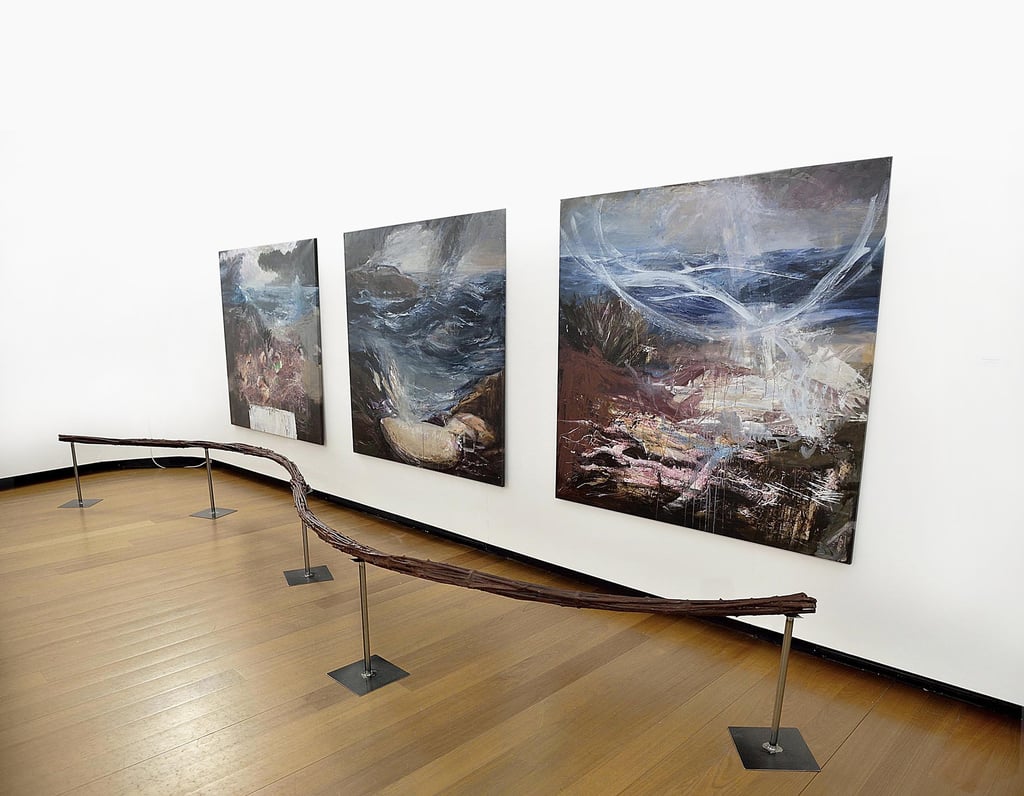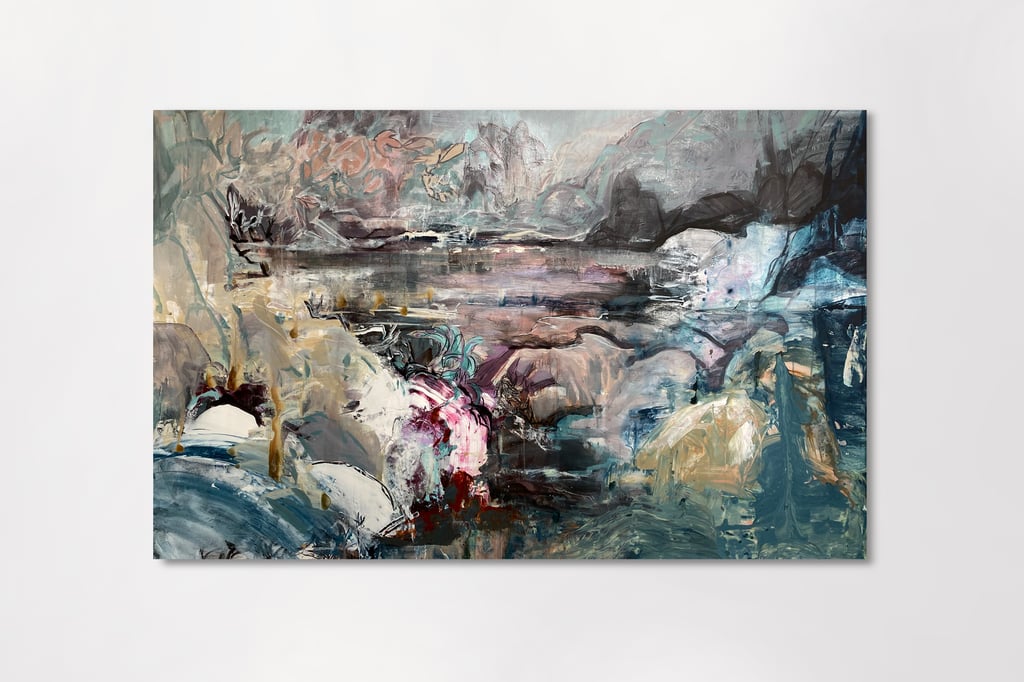Walking the land
The relevant fact of the "Walking The Land" series, which is after all a landscape theme, is that the nature of the paintings would be different if the act of walking was not associated with the way to get there, with the slow crossing of the distance between two points and the preparation that the route introduces to the state of consciousness.


Walking is what human beings have been doing since they existed on the face of the earth. Today that concept has lost importance because the imperatives of modern life don't leave time to move that way and that's why we've invented different ways to do it faster, however walking is more than going from one side to another at the pace of the steps, it's a sacramental act that restores our connection with nature, which takes place on a timescale of its own that allows us to assimilate with quality what is happening around us.
Today travel is in many cases a connection between two points with nothing in between. They generally imply a simplification and, as a result, there is a loss of information about what exists in the connection between the beginning and the end of the journey, about the neighborhood of each geography and the progressive adaptation of the awareness of what happens during the journey is lost. The rhythm of the steps with their slow cadence allows this awareness and creates space to fully enjoy the immersive experience of each place. Modernity has made speed a necessary imperative to achieve more and more goals in life, but as a result, the ability to properly assimilate the space between departure and arrival has been lost. To recover the relationship with geography, with its immense variety and also with what it represents in the experience of being alive, it is necessary to recover from the millennial heritage of the act of walking, which means recovering a process of interiorizing the world through the relationship between what you see and what you feel about a place in a suitable cadence, in which the movement positively influences the ideas.
Walking enriches memory, makes it plastic and robust where each fragment is inseparable from the whole, where the meaning of each thing finds an echo on a wider plane and justifies the kind of full consciousness one has when arriving anywhere, a feeling that it is not interrupted to resume later in a different context, as when one enters a fast transport to be dropped without transition at a distant destination. The immersive continuity of the journey is an attribute of slow movement that provides information to memory in a complete way, where every detail can be used as reliable raw material for the act of creation.


"Walking the land #1" Installation view
The plasticity of memory is reflected in the way it evolves over time, in this aspect there are no rigid and unalterable compartments, everything is connected and there is a network of interconnections that adapts whenever new experiences occur, it is natural that there are interferences from the thoughts that alter the perception of what is happening at a certain moment and these reflections can interfere with memories, give them a different color that over time create their own reality.
When the experience of what happens on a journey on foot becomes a painting resource, the process is difficult to program because it is based on a moldable mass that has the capacity to evolve by itself. The creative process is also based on deferred information about the sites, on things that have happened in the past, on situations that change in memory, it is natural that with so many variables at stake it becomes a complete recreation and not a portrait of the world from around us. In general, the network of memories, when evoked, open up a diverse range of possibilities with many layers of information that form the basis of a comprehensive view of the landscape.
The paintings are born from ideas that are the result of a moldable material, they are inspired by a continuous flow of concepts and the moment of creation is the moment of an important choice in relation to everything we know or experience and that has to do with the point from which things are seen, the method is based on the possibilities of perspective, on the angle of view that is chosen and that will contribute decisively to the identity of the work. More than the landscape itself, it is the movement that reveals the nature of the world, the pendulum of a cadence that is the essence of creation and defines the contours of the representation.
Traveling at the pace of the steps allows a complete immersion in the surrounding reality and the possibility of having detailed information is a valuable resource that teaches us about how situations are interconnected, how the transition between different landscapes takes place. This continuity is important at the moment of creation because it does not impose rigid borders, there is interconnection, there is complementarity and that means freedom.
The formulation of a painting on the landscape needs freedom so that it is not just a way of creating colorful images that evoke certain places. For painting to represent the experience as a whole, for it to be possible to include other dimensions in the representation, it needs intuition, full sensitivity without restrictions, and also improvisation as a method. When memory is built through movement, it is naturally rich and dynamic and this resource helps in the choices that have to be made so that all creative possibilities are summoned and not just those that depend on the basic contours of the places. Improvisation is a quick response to change, a way of valuing what gesture does with memory.


"Walking the land #2"